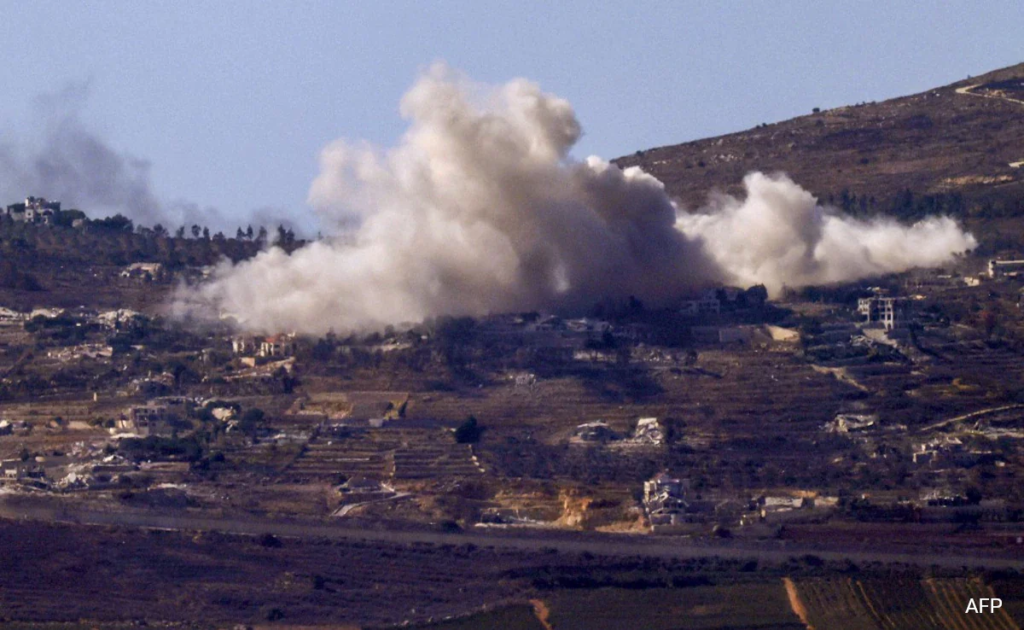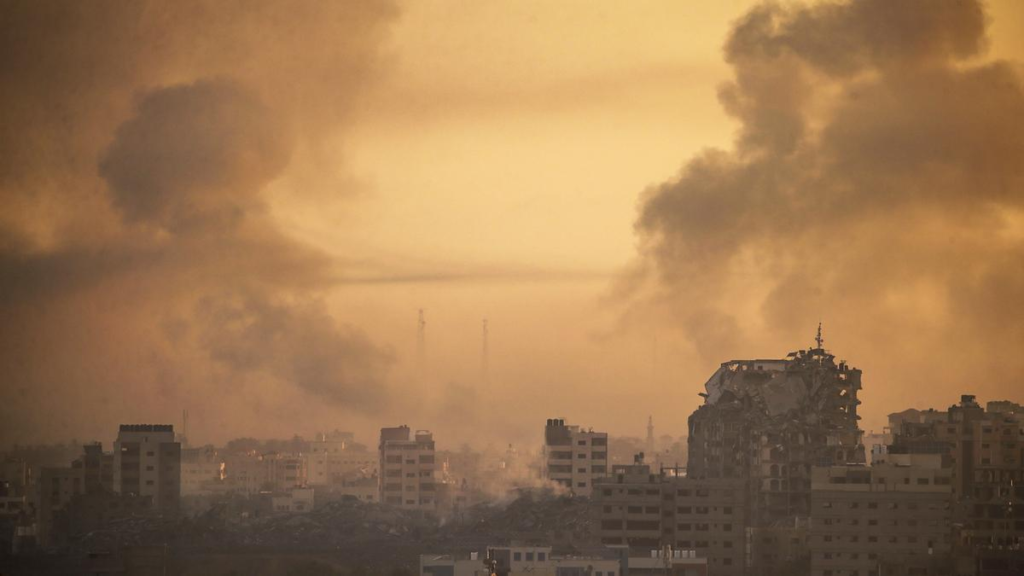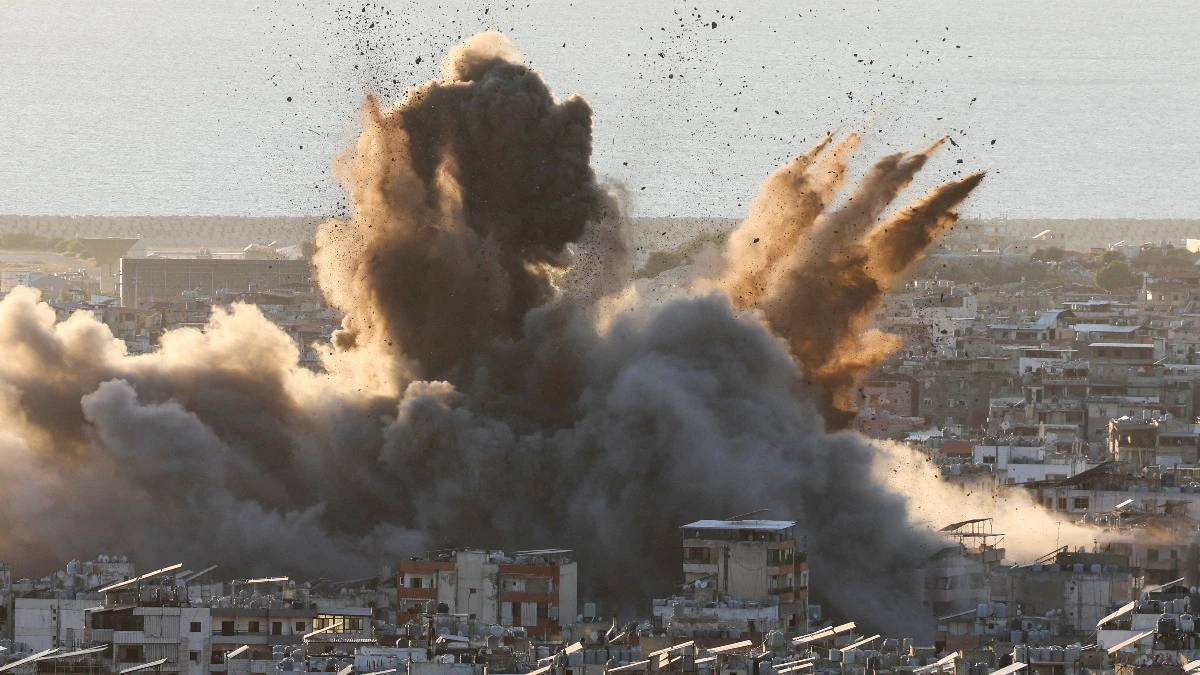In a dramatic escalation of conflict, Israel launched retaliatory strikes on Beirut and Gaza following a drone attack near Israeli Prime Minister Benjamin Netanyahu’s holiday home. Tensions had already been rising in the region due to earlier rocket and missile attacks by Hezbollah and Hamas,
but this particular incident has significantly heightened the conflict between Israel and the Iran-backed groups. As Israel intensifies its military response, hopes for a ceasefire and de-escalation appear increasingly distant.
The Drone Attack Near Netanyahu’s Residence
On Saturday, Hezbollah, a powerful Lebanese armed group and political party, launched a drone attack aimed at a vacation home belonging to Israeli Prime Minister Benjamin Netanyahu.
Although Netanyahu was not at the residence at the time of the attack, Israeli officials quickly framed the incident as an assassination attempt orchestrated by Hezbollah, which they labeled as “Iran’s proxy” in the region. Netanyahu, in a public statement, declared that the attack was a “grave mistake” and a serious threat to Israeli sovereignty.
The drone strike came in the midst of broader hostilities involving both Hezbollah and Hamas, two organizations that have consistently opposed Israel’s presence and policies in the Middle East. In response, Israel wasted no time in retaliating against Hezbollah strongholds in southern Beirut and Hamas-controlled Gaza. Read : Israeli PM Netanyahu is Trying to Drag Iran into the War: Turkey
According to Israeli sources, these airstrikes targeted arms storage facilities and intelligence headquarters used by the groups.
⭕At least 5 air strikes reported so far in Beruit pic.twitter.com/WlxZI3paLl
— Daniella Modos – Cutter -SEN (@DmodosCutter) October 19, 2024
While Netanyahu’s residence was reportedly not damaged, the implications of this attack are profound. Israel views it as part of a larger campaign by Iran and its allies to destabilize the region and challenge Israel’s military dominance.
With tensions already high due to earlier missile attacks from Iran, the drone strike served as another flashpoint that pushed the region closer to full-scale conflict.
The timing of the incident is also significant, as it coincides with broader geopolitical concerns. With the U.S. elections approaching and the ongoing regional realignments, Israel is under pressure to secure its borders and eliminate threats from Hezbollah, Hamas, and other adversaries. The drone attack has therefore been interpreted by many as a calculated move designed to provoke a response from Israel and increase the stakes in the ongoing conflict.
Israeli Retaliation: Strikes on Beirut and Gaza
Israel responded swiftly and forcefully to the drone attack, launching airstrikes on what it described as key military sites used by Hezbollah in Beirut and Hamas in Gaza.
The Israeli Defense Forces (IDF) specifically targeted weapons depots, command centers, and intelligence hubs in southern Beirut, a region that has historically served as a stronghold for Hezbollah. These strikes left thick clouds of smoke over the city, with significant damage reported in several locations.
Beirut, once considered one of the most densely populated zones in the region, saw tens of thousands of residents flee in the wake of these strikes. The IDF had issued warnings to civilians, urging them to evacuate several neighborhoods before the strikes took place. However, Israel’s strikes extended beyond the areas initially warned, leading to further chaos and displacement among the population.

The strikes on Gaza were even more devastating, with local officials reporting over 100 fatalities. The bombardment focused on Hamas-controlled areas, including weapons storage facilities and underground tunnels used by the group. The strikes around Beit Lahiya, in northern Gaza, were particularly deadly, with at least 73 people killed in one set of strikes, according to Hamas-affiliated media.
The situation in Gaza has grown increasingly dire in recent weeks as Israel has tightened its siege around key locations, including hospitals. Reports from local sources indicate that three hospitals are now under siege, with dwindling supplies and a growing number of casualties. For over a year, Israel has been attempting to weaken Hamas’ control over Gaza, but the recent escalation signals that the conflict may be far from over.
Netanyahu, buoyed by international support and his own country’s calls for a stronger military response, has vowed to continue the offensive until Hezbollah and Hamas are sufficiently weakened. He also made it clear that the Israeli response was aimed at both Iran and its proxies, stating that anyone who attempts to harm Israeli citizens will face severe consequences.
Regional and Global Implications
The escalation of violence between Israel, Hezbollah, and Hamas has reverberated across the Middle East, with international observers warning of the potential for a larger conflict that could draw in neighboring countries. Iran, which has long supported Hezbollah and Hamas, has also been involved in direct confrontations with Israel over the past year, including missile attacks that have targeted Israeli territory.
Following the drone attack on Netanyahu’s residence, Iran issued a statement through its mission to the United Nations, acknowledging Hezbollah’s role in the attack but framing it as a justified response to Israeli actions in Lebanon and Gaza. Iran’s message highlights the complex web of alliances and hostilities that define the region, with Tehran continuing to assert its influence over Lebanon and Gaza through its support for Hezbollah and Hamas.
The conflict’s timing is particularly significant for Israel, which is preparing for upcoming U.S. elections. Analysts have suggested that Israel’s intensified military operations are aimed at securing its borders and preventing Hezbollah and Hamas from regrouping while the international focus remains on domestic issues in the U.S. With the U.S. historically serving as a key ally of Israel, any changes in U.S. foreign policy could have significant implications for the region, making the current military actions all the more critical for Netanyahu’s government.

Furthermore, the recent assassination of Hamas leader Yahya Sinwar has dampened hopes for a potential ceasefire between the warring factions. Sinwar’s death, which occurred just days before the drone attack, was initially seen by some as an opportunity for a de-escalation of violence in Gaza and Lebanon. However, the retaliatory strikes by Hezbollah and Israel’s harsh response have all but dashed those hopes.
For Hezbollah, the assassination of their secretary general Hassan Nasrallah in a September 27 Israeli airstrike has also fueled their resolve to continue the conflict. Nasrallah was a key figure in Hezbollah’s military operations and political strategies, and his death has left a leadership vacuum that the group is struggling to fill. As a result, Hezbollah has intensified its attacks on Israel, further complicating efforts to broker peace in the region.
The civilian toll in both Gaza and Beirut continues to rise, with humanitarian organizations calling for an immediate ceasefire to prevent further loss of life. However, the prospects for peace remain slim, as both Israel and its adversaries have vowed to continue the conflict until their respective goals are achieved.
In Gaza, the siege of hospitals and the destruction of key infrastructure have created a humanitarian crisis, with limited access to medical care and basic supplies. International aid organizations have struggled to deliver assistance to the affected areas due to the ongoing military operations, leaving many civilians trapped in increasingly desperate conditions.
The situation in Lebanon is similarly dire, with thousands of civilians displaced and critical infrastructure damaged by Israeli airstrikes. Hezbollah’s strongholds in southern Beirut have been particularly hard hit, and the displacement of civilians has created further strain on Lebanon’s already fragile economy and political system.

The drone attack near Israeli Prime Minister Benjamin Netanyahu’s home has set off a new round of violence in the already volatile Middle East. Israel’s retaliatory strikes on Beirut and Gaza have resulted in significant casualties and further destabilization in the region. As the conflict between Israel, Hezbollah, and Hamas continues to escalate, the prospects for peace appear increasingly remote.
Both Hezbollah and Hamas have vowed to continue their resistance against Israel, while Netanyahu has made it clear that Israel will respond with force to any further provocations. The broader geopolitical implications of this conflict, particularly with regard to Iran’s involvement and the upcoming U.S. elections, make the situation even more complex.
As the conflict rages on, the civilian populations of Gaza and Beirut continue to suffer the brunt of the violence, with humanitarian conditions deteriorating rapidly. Without a concerted effort from the international community to broker peace, the Middle East could be on the brink of yet another prolonged and devastating conflict.
let’s enjoy few years on earth with peace and happiness….✍🏼🙏

